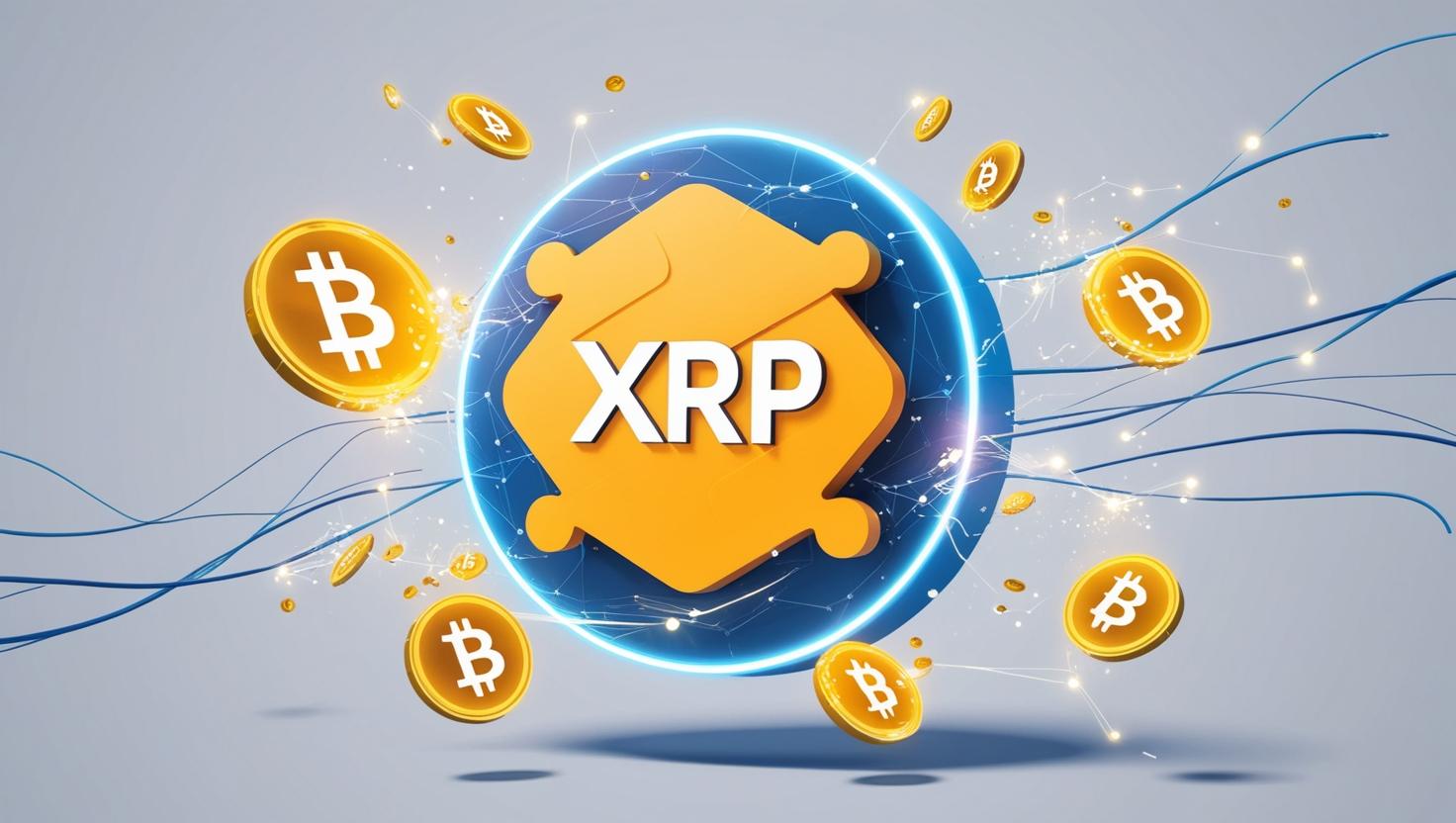Introduction
XRP is one of the most well-known cryptocurrencies, often associated with fast and low-cost cross-border transactions. Created by Ripple Labs, XRP serves as a bridge currency in global payments, making it easier for financial institutions to transfer money across borders efficiently.
But what exactly is XRP? How does it work? And why is it different from Bitcoin and other cryptocurrencies? In this comprehensive guide, we’ll explore everything you need to know about XRP, including its history, technology, use cases, and future potential.
What is XRP?
XRP is a digital asset and cryptocurrency that operates on the XRP Ledger (XRPL), a decentralized blockchain technology developed by Ripple Labs. Unlike Bitcoin, which was designed as a peer-to-peer electronic cash system, XRP was created primarily for fast, low-cost international payments.
Key Features of XRP:
- Speed: Transactions settle in 3-5 seconds, much faster than Bitcoin (10+ minutes) or Ethereum (15+ seconds).
- Low Cost: Each transaction costs a fraction of a cent (around 0.0002 XRP).
- Scalability: The XRP Ledger can handle 1,500+ transactions per second (TPS), compared to Bitcoin’s 7 TPS.
- Energy Efficient: Unlike Bitcoin’s Proof-of-Work (PoW), XRP uses a consensus protocol, consuming far less energy.
History of XRP and Ripple
XRP was created in 2012 by Chris Larsen and Jed McCaleb under the company Ripple Labs (originally called OpenCoin). The goal was to improve the traditional banking system by enabling instant cross-border payments.
Key Milestones:
- 2012: XRP Ledger goes live.
- 2013: Ripple Labs rebrands from OpenCoin.
- 2017: XRP price surges during the crypto bull run.
- 2020: SEC sues Ripple, alleging XRP is an unregistered security (case ongoing).
- 2023: Partial victory for Ripple as court rules XRP is not a security when sold to retail investors.
How Does XRP Work?
XRP operates on the XRP Ledger (XRPL), an open-source blockchain that uses a unique consensus mechanism (not Proof-of-Work or Proof-of-Stake).
XRP Ledger Consensus Protocol
Instead of miners, the XRPL relies on validator nodes (run by banks, exchanges, and individuals) to confirm transactions. These validators agree on the order and validity of transactions, making the system:
- Fast (settles in seconds)
- Energy-efficient (no mining required)
- Decentralized (no single entity controls it)
XRP as a Bridge Currency
Banks and payment providers use XRP to facilitate cross-border transactions. Here’s how it works:
- A bank in the USA wants to send money to a bank in Europe.
- Instead of holding multiple currencies, the US bank converts USD to XRP.
- XRP is sent instantly to the European bank.
- The European bank converts XRP to EUR.
This process eliminates the need for nostro/vostro accounts (pre-funded accounts in foreign banks), reducing costs and delays.
XRP vs. Bitcoin vs. Ethereum
| Feature | XRP | Bitcoin (BTC) | Ethereum (ETH) |
| Purpose | Cross-border payments | Digital gold, store of value | Smart contracts, DeFi |
| Transaction Speed | 3-5 sec | 10+ min | 15 sec – 5 min |
| Transaction Cost | ~$0.0002 | $1-$50 (varies) | $0.10-$50 (varies) |
| Consensus | Consensus Protocol | Proof-of-Work (PoW) | Proof-of-Stake (PoS) |
| Supply | 100 billion (fixed) | 21 million (capped) | No hard cap |
XRP is not mined like Bitcoin—all 100 billion XRP were pre-mined when the network launched. Ripple holds a portion in escrow, releasing 1 billion XRP monthly to control supply.
Use Cases of XRP
1. Cross-Border Payments (RippleNet & ODL)
Ripple’s payment network, RippleNet, uses XRP via On-Demand Liquidity (ODL) to enable instant money transfers for banks and financial institutions. Companies like MoneyGram, Santander, and SBI Remit have used ODL.
2. Micropayments & Remittances
Due to low fees, XRP is ideal for small transactions, such as remittances (workers sending money home).
3. Central Bank Digital Currencies (CBDCs)
Ripple is working with governments to develop CBDCs using XRP Ledger technology.
4. Decentralized Finance (DeFi) & NFTs
The XRP Ledger supports smart contracts, tokenization, and NFTs, expanding its use beyond payments.
Is XRP a Good Investment?
Pros:
✅ Fast & Cheap Transactions – Ideal for real-world payments.
✅ Strong Partnerships – Used by major banks and payment providers.
✅ Regulatory Clarity – Court ruled XRP is not a security in retail sales.
Cons:
❌ SEC Lawsuit Risk – Ongoing case creates uncertainty.
❌ Centralization Concerns – Ripple holds a large amount of XRP.
❌ Competition – Faces rivals like Stellar (XLM) and SWIFT.
XRP Price History & Future Predictions
- All-Time High: ~$3.84 (Jan 2018)
- 2023 Price: ~$0.50-$0.80
- Future Outlook: If Ripple wins the SEC case and adoption grows, XRP could see significant gains.
How to Buy and Store XRP
Buying XRP:
- Choose an Exchange (Binance, Kraken, Uphold, BitStamp).
- Create an Account & Verify ID.
- Deposit Funds (USD, EUR, or crypto).
- Buy XRP (market or limit order).
Storing XRP:
- Hot Wallets: Trust Wallet, Exodus (for easy access).
- Cold Wallets: Ledger Nano X, Trezor (for security).
Ripple vs. SEC: Legal Battle Explained
In December 2020, the SEC sued Ripple, claiming XRP was an unregistered security. The case has major implications for crypto regulation.
Key Updates (2023-2024):
- July 2023: Court rules XRP is not a security when sold to the public.
- 2024: Case ongoing; final decision could impact crypto regulations.
A Ripple win could boost XRP’s price, while a loss may lead to stricter regulations.
Future of XRP: What’s Next?
- More Bank & Institutional Adoption – Ripple continues partnering with financial firms.
- CBDC Development – XRP Ledger could power national digital currencies.
- DeFi & NFT Growth – More projects may build on XRPL.
Conclusion
XRP is a unique cryptocurrency designed for fast, affordable cross-border payments. While it faces challenges (like the SEC lawsuit), its technology and partnerships make it a strong contender in the crypto space.
Whether you’re an investor, developer, or just curious about crypto, XRP is worth watching as Ripple continues to push for global financial innovation.
FAQs About XRP
1. Is XRP better than Bitcoin?
- For payments, yes (faster & cheaper). For store of value, Bitcoin is better.
2. Can XRP reach $10?
- Possible with mass adoption and a favorable SEC outcome.
3. Who owns the most XRP?
- Ripple holds ~45 billion XRP in escrow.
4. Is XRP decentralized?
- Partially. Ripple influences development, but the ledger is open-source.
5. Where can I use XRP?
- For payments, trading, DeFi, and NFTs on supported platforms.
Would you like more details on any section? Let me know in the comments! 🚀

